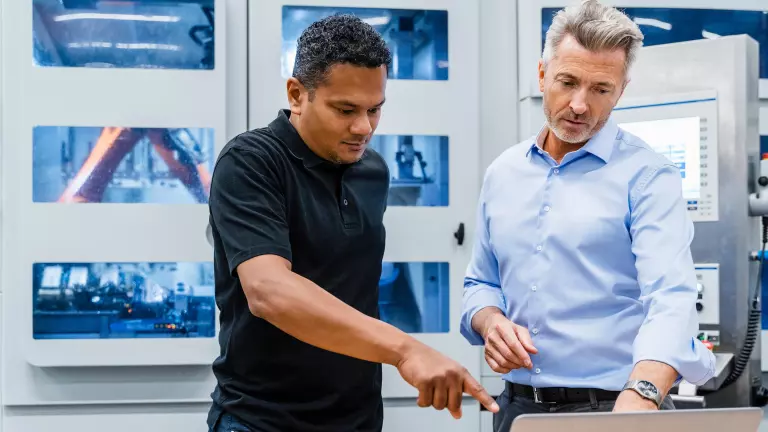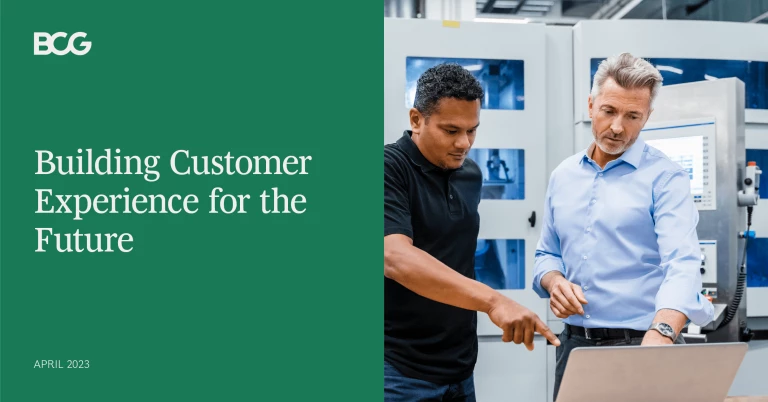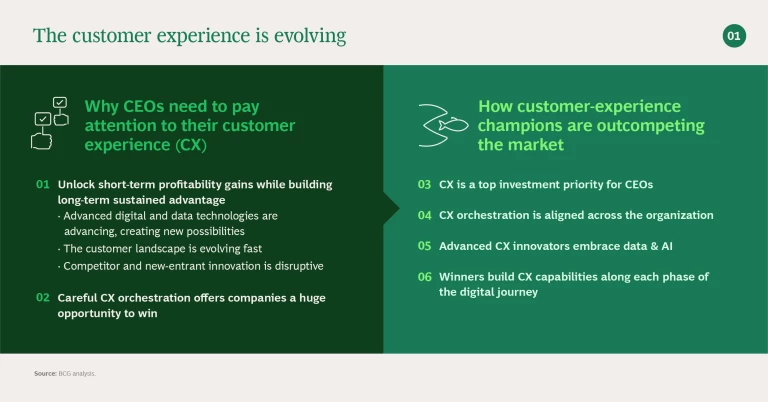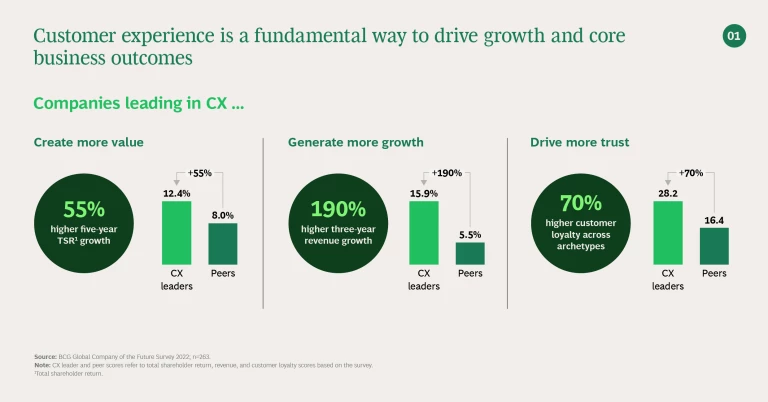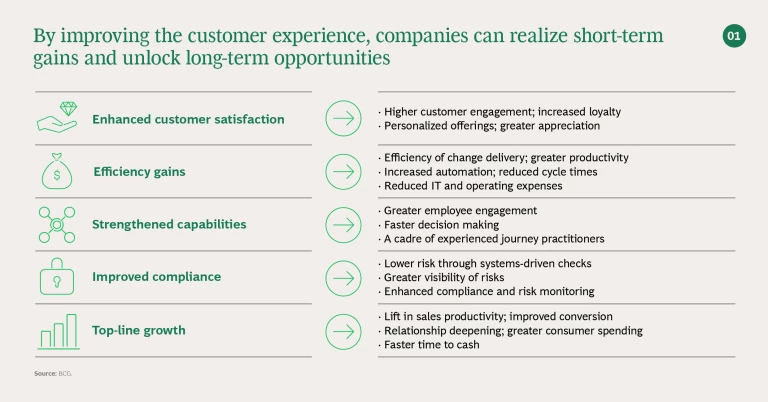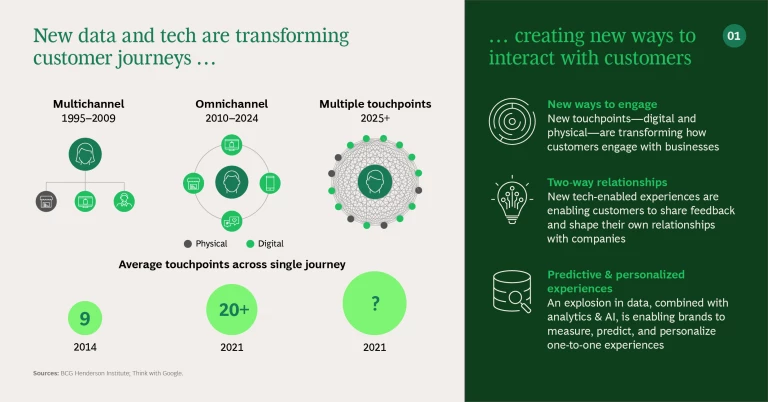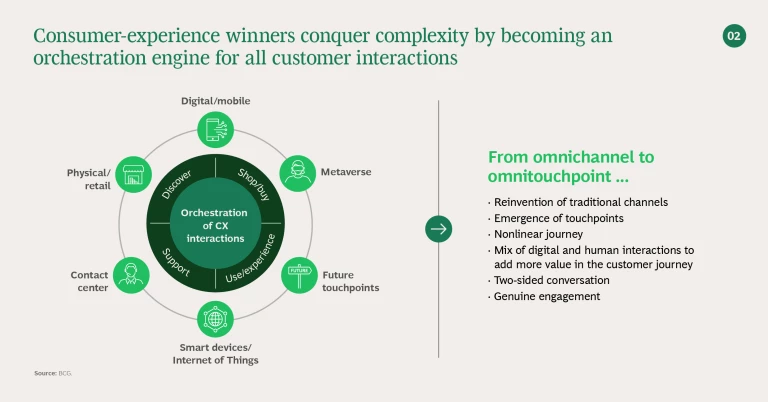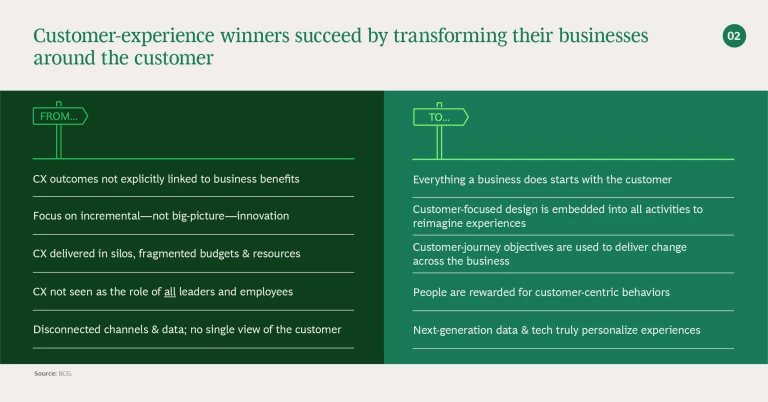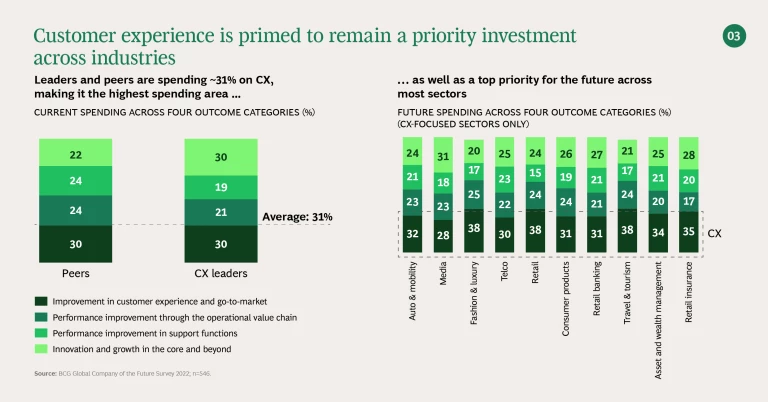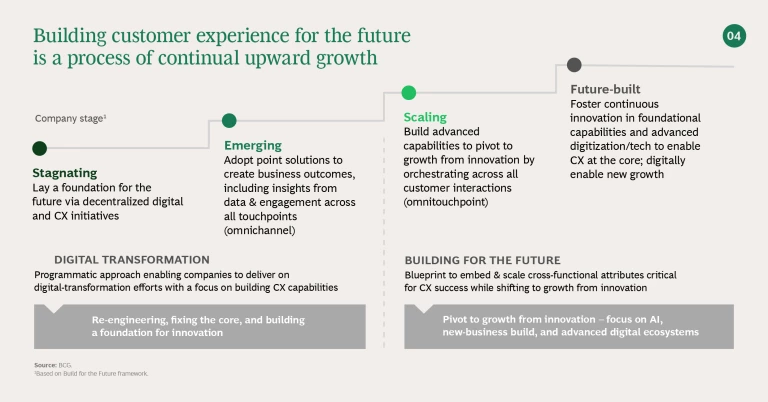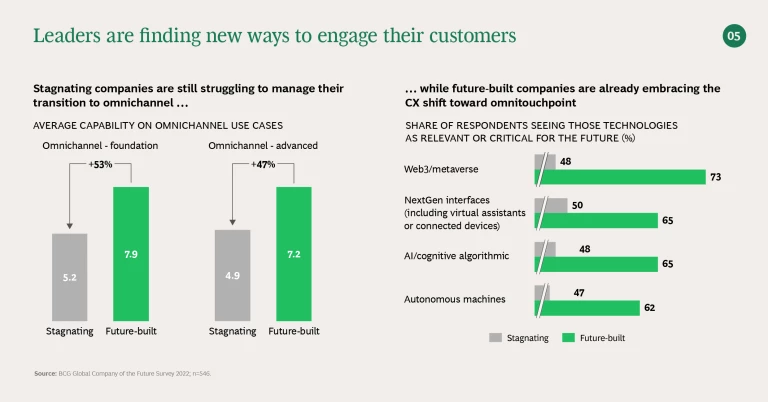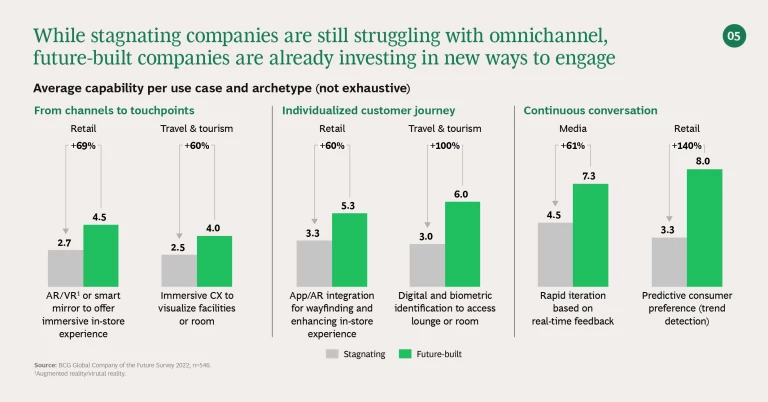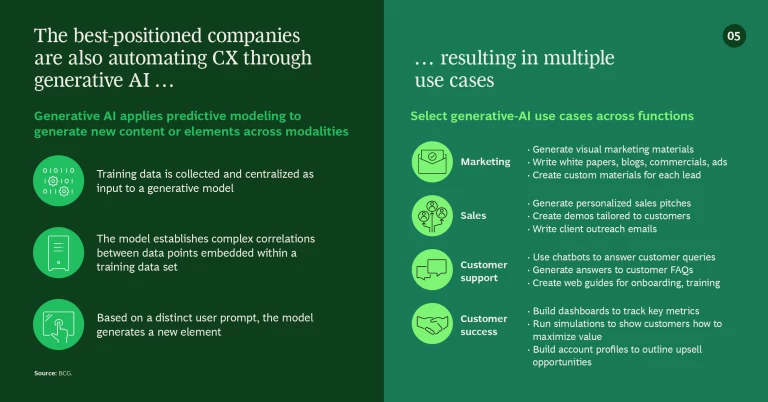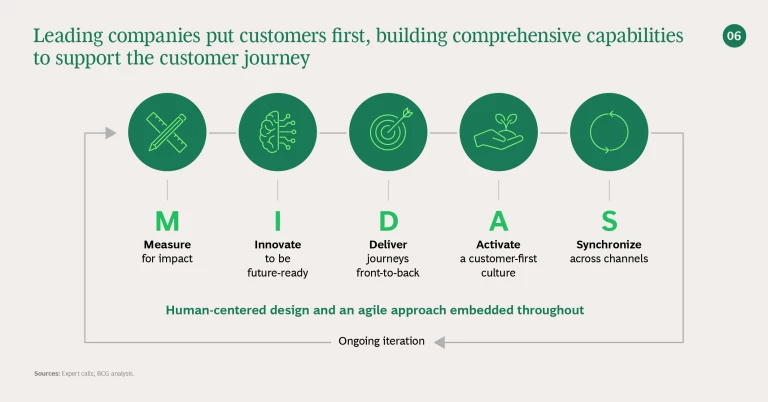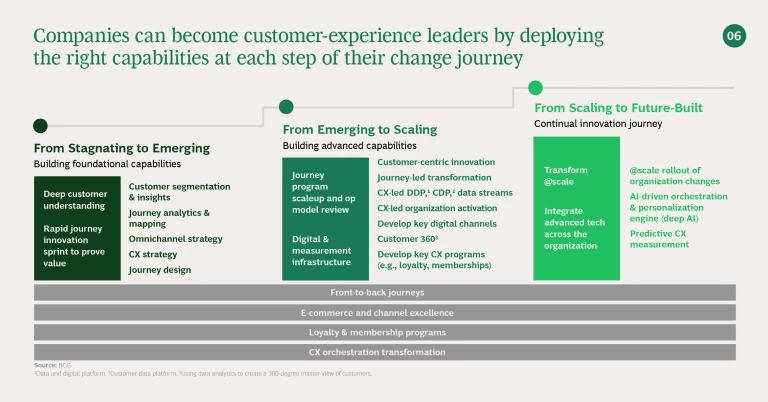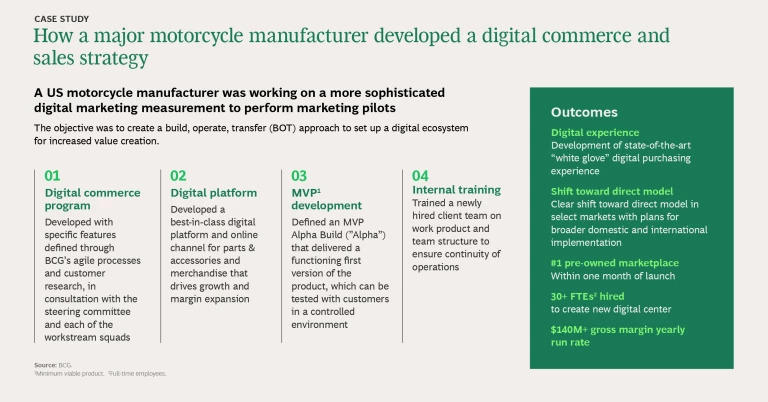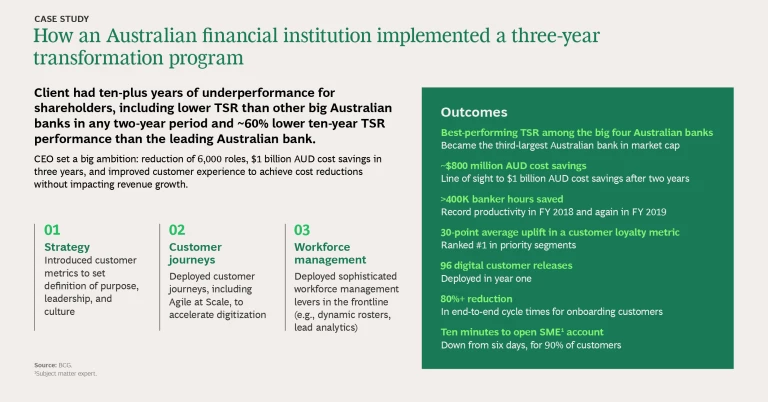The following insights are part of BCG’s Build for the Future series, based on three years of research conducted on digital transformations at major organizations around the globe.
Even before the pandemic turned most individuals into diehard online shoppers, the world of customer interactions was already in a state of flux. The speed of change has only accelerated. Fast-evolving consumer expectations have been met by new capabilities, technical or otherwise, designed to satisfy them. Winning companies have deployed these capabilities to great effect. But these innovators are few and far between. For most businesses, competing with this group will take dramatically rethinking the customer experience—and making the necessary investments to achieve this goal. (See “Build for the Future.”)
Build For The Future
Our latest survey asked all participants about five areas that are fundamental to success, the emphasis of transformation efforts, how successful they have been, and the degree to which each of more than 50 potential influencing capabilities were in place. We then used the resulting data set to analyze which combination of capabilities, if built sufficiently well, had the biggest impact on future readiness and which combination differentiated future-built organizations from those facing a greater risk of disruption. Six attributes emerged from this analysis and, in our judgment, serve as the best descriptors for leading companies.
From this research, we identified the path that companies must take to become built for the future. We’ve reconciled the challenge of what these companies need to do (identifying which initiatives drive the most value by sector) with how to do it (determining which capabilities drive success and how to build them fast). CEOs can tailor this new playbook to their company-specific change agendas. Learn more about our Build for the Future campaign
At a Glance
Here’s what CEOs and other leaders need to know about the changing landscape of customer experience.
- Digital and data are transforming customer interactions. The customer experience has been radically altered—and faces further transformation—as touchpoints, on-demand services, personalization, and AI-enabled automation become more sophisticated. Leading organizations are no longer thinking of touchpoints in terms of steps along a journey, but rather as gateways to points of sale or as richer sources of engagement.
- Customer experience was ranked the highest-priority investment among respondents to our Build for the Future survey. Moreover, companies ranked as champions in their category demonstrated notably greater investments in customer experience than their competitors—and significantly greater rewards.
- CEOs must embrace customer experience as a strategic differentiator and a source of competitive advantage, fundamental to the way that they run their business.
By the Numbers
Today’s winners aren’t just outperforming. They’re crushing the competition. (See the exhibit.) Companies leading in customer experience reap significant rewards in acquisition, spending, loyalty, advocacy, and cost efficiency.
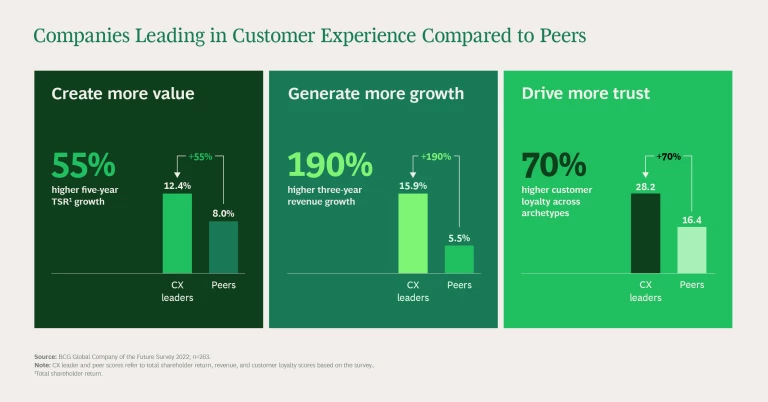
The Next Steps for Leaders
Put the customer first. Few companies have actually embodied a “customer first” mindset. CEOs must move their organizations beyond an uninformed, fragmented, and incremental approach to the customer experience. They must reimagine their approach to operations, talent, and technology with the customer as a starting point.
Don’t set a limit on your imagination. If you’re working on an omnichannel strategy, you’re already two steps behind. The most successful companies aren’t just meeting customers where they are today; they’re looking for ways to engage them tomorrow. A new era of consumer touchpoints is dawning, ushered in by connected devices, the metaverse, and other interfaces. Harnessing data, as well as AI and other technologies, will be essential to maximizing customer satisfaction in these spaces.
Build the right capabilities. The best-positioned companies methodically cultivate end-to-end capabilities that allow them to win customers in the present and capture new opportunities the future. Competing with these organizations means building a robust infrastructure and processes that foster a deeper understanding of the customer, improved execution, and continuous innovation.
The Cutting Edge of Customer Experience
Here’s how some leaders are driving greater customer satisfaction.
Augmented Experiences. Amazon has launched its tech-powered Dash Cart—a traditional grocery store cart fitted with an interactive screen—to automatically scan items and provide users with additional info. Armed with this device, shoppers can receive real-time personal recommendations based on their shopping habits and physical location within the store.
Frictionless Commerce. A motorcycle manufacturer built a digital ecosystem with a new suite of user experience–driven offerings that make it easier for customers to learn more about the brand’s products, order out-of-stock items, and connect with each other on the site. Notably, the company also added an interactive tool that allows customers to seamlessly build their desired motorcycle.
On-Demand Personalization. A telco has reimagined its customer journey for the digital era to boost satisfaction. Instead of having to enter locked-in contracts with human agents, customers can receive personalized recommendations on online channels, customize products and features to suit their needs, and flexibly adjust their plans via self-service apps.
Data-Powered Insights. A major cosmetics player is identifying and responding to emerging trends faster than the competition with new AI-powered social listening and detection capabilities. Among these is an engine that gathers information from the publications of beauty influencers, professionals, and others whose advice could shape consumption habits.
Learn more about what it takes to build customer experience for the future in the slideshow below.
